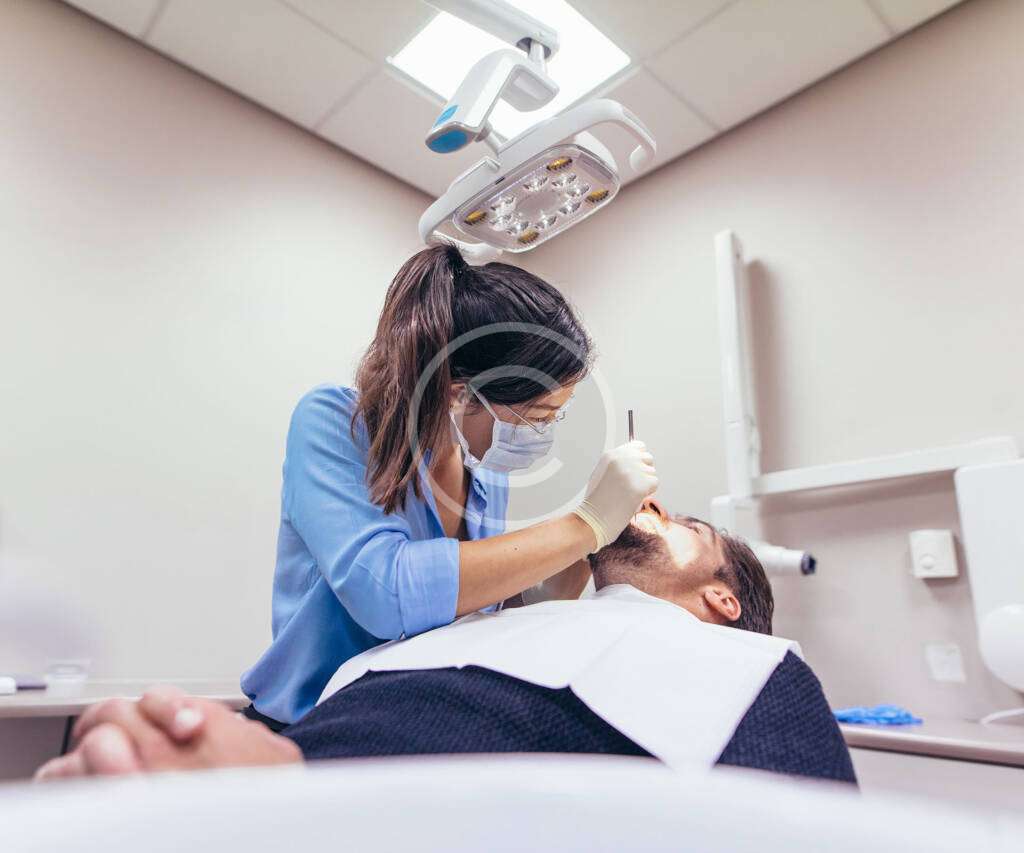What Is a Deep Cleaning?
A deep cleaning, also known as scaling and root planing, is a more intensive form of teeth cleaning used to treat gum disease and remove plaque and tartar that has built up below the gumline. Unlike a regular cleaning, which focuses on the surface of the teeth, deep cleaning targets areas that require more thorough treatment to prevent or address periodontal (gum) disease.
Why Is a Deep Cleaning Needed?
Treating Gum Disease
A deep cleaning is typically recommended when there are signs of gum disease, such as gum recession, bleeding, or pockets forming between the teeth and gums. These are symptoms of gingivitis (early-stage gum disease) or periodontitis (advanced gum disease). Deep cleaning helps stop the progression of the disease by removing bacteria and plaque from below the gumline.
Preventing Tooth Loss
Without proper treatment, untreated gum disease can lead to tooth mobility and, eventually, tooth loss. By performing a deep cleaning, your dentist can help prevent these outcomes by eliminating the harmful bacteria that cause infections and damage to the bone supporting your teeth.
Improving Oral Health
By removing plaque and tartar from hard-to-reach areas, deep cleaning contributes to healthier gums, fresher breath, and overall better oral health. It also reduces the risk of further cavities and helps maintain the longevity of your teeth.


How Is a Deep Cleaning Performed?
The deep cleaning procedure is usually performed in two main steps: scaling and root planing.
Scaling
Scaling involves the removal of plaque and tartar (hardened plaque) from the surfaces of your teeth, both above and below the gumline. Special dental instruments are used to gently scrape away these deposits, which can harbor bacteria and contribute to gum disease.
Root Planing
After scaling, root planing is performed to smooth out the roots of your teeth. This process removes any remaining bacteria from the tooth roots and helps the gums reattach more firmly to the teeth, reducing the pockets between your gums and teeth. This step is crucial in promoting healing and preventing further gum disease progression.
What to Expect During a Deep Cleaning Appointment
Post-Procedure Care: After your deep cleaning, you may experience some discomfort or sensitivity, particularly to cold or hot temperatures. Your dentist may recommend using a special mouth rinse or medication to aid in the healing process.
Initial Consultation: Your dentist or hygienist will examine your gums and teeth, potentially using X-rays to assess the extent of plaque buildup and gum disease. They will measure the depth of any gum pockets to determine if a deep cleaning is necessary.
Anesthesia: Depending on the severity of your gum disease, local anesthesia may be administered to numb the area and ensure you’re comfortable during the procedure.
Scaling and Root Planing: The actual cleaning will be done in sections, either in one visit or over two appointments, depending on the severity of your condition. This may take up to 90 minutes or more per session.
Benefits of a Deep Cleaning
- Prevents Gum Disease Progression: By addressing bacteria and plaque buildup beneath the gums, deep cleaning helps prevent gum disease from advancing to more severe stages.
- Promotes Healthier Gums: It encourages the healing and reattachment of the gums to the tooth roots, reducing inflammation and bleeding.
- Improves Overall Oral Health: A deep cleaning helps reduce bad breath, reduces the risk of tooth decay, and helps preserve your natural teeth.
- Long-Term Savings: By treating gum disease early with a deep cleaning, you may avoid more invasive and costly dental procedures, such as root canals or tooth extractions.
Are Deep Cleanings Painful?
While a deep cleaning may cause some discomfort, it is not typically painful. Local anesthesia is used to numb the affected areas, making the procedure comfortable. After the treatment, mild soreness or sensitivity is common but can usually be managed with over-the-counter pain relievers. Any discomfort typically resolves within a few days.
Who Needs a Deep Cleaning?
A deep cleaning is recommended for individuals with the following:
- Gum Disease: Those showing signs of gingivitis or periodontitis may need a deep cleaning to treat the condition.
- Deep Gum Pockets: If your dentist measures gum pockets greater than 4mm, it may indicate the need for a deep cleaning.
- Heavy Plaque and Tartar Buildup: Those who have not had a professional cleaning in a while or who struggle with consistent oral hygiene may require a deep cleaning to remove accumulated plaque and tartar.
Aftercare and Recovery
After a deep cleaning, it’s important to follow your dentist’s aftercare instructions to promote healing:
Attend Follow-Up Appointments: Your dentist will schedule follow-up visits to monitor the progress of your gums and ensure they are healing correctly.
Brush and Floss Gently: Brush your teeth carefully with a soft-bristled toothbrush and avoid vigorous brushing or flossing around the treated areas until the discomfort subsides.
Use Special Rinses: Your dentist may recommend an antimicrobial mouth rinse to reduce the risk of infection and speed up healing.
Avoid Smoking: Smoking can slow healing and contribute to further gum problems, so it’s best to avoid it during recovery.
Contact Us to Schedule Your Deep Cleaning
If you’re experiencing symptoms of gum disease, such as bleeding gums, persistent bad breath, or gum recession, don’t wait—schedule a consultation today. Our team is dedicated to restoring and maintaining your oral health, and we’ll guide you through the deep cleaning process with care and professionalism. Let us help you protect your smile for years to come!



